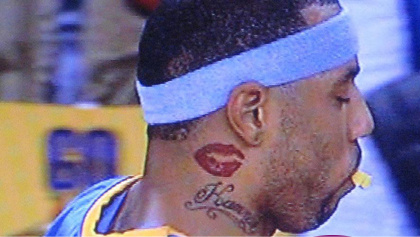Optimism from the Seattle Mariners’ 6-3 start has been stifled some by a subsequent 1-9 stretch, including 8 straight (losing 7-2 last night to the Houston Astros extended this streak), with three scoreless games. Before everyone forgets it’s baseball season and starts fawning over Mel Kiper’s “big board” and who the Seattle Seahawks will pick in the upcoming NFL draft, let’s take a look at whether the Mariners are the team of the first nine games, the last ten games, or some combination thereof.
Keep in Mind, Baseball is Different
In the dark days before WWII, the sports landscape of America was dominated by three sports: baseball, boxing, and horse racing. Today it sometimes seems like the hierarchy goes something like: the Super Bowl, the NFL playoffs, the NFL regular season, the NFL preseason, Hard Knocks on HBO, the NFL Draft, the NFL Combine … You get the idea, and yes, I’m exaggerating a little. But, with the NFLization of sports coverage comes a mentality that every game is the most important game ever, and that mentality tends to trickle over into baseball analysis, as well.
There used to be a saying in baseball, back when the season was 154 games, that there are 50 games you’re going to win, 50 games you’re going to lose, and it’s what you do with the other 50 that matter. So, does a week long losing streak tell us anything in MLB? I’m going to say, not much. There’s an excellent article by Neil Paine on FiveThirtyEight, Nate Silver’s new site, that suggests to find meaning in a baseball season’s results you need to wait about 67 games.
So Mariners’ fans, just enjoy the games until mid-June and we’ll see where we are. A healthy rotation of King Felix, Hisashi Iwakuma, James Paxton, and Taijuan Walker should be formidable enough to overcome weak hitting, so look for an uptick when the latter three come off the DL. And, there’s almost no way the hitting stays as anemic as the current .227/.284/365 which ranks 14th/14th/12th in the AL.
Abraham Almonte – The Verdict is Still Out
Manager Lloyd McClendon has been hitting outfielder Abraham Almonte at the top of the order, presumably because of his plus speed. The triple he legged out in the Marlins series was exhilarating to watch. But, through the first 18 games, Almonte’s OBP is .268. You can’t have your leadoff hitter not getting on base at a decent clip. Granted, five of the Mariners’ regulars have sub .300 OBP, so it’s not like there a ton of options. Almonte’s minor league numbers suggest he should walk more often and get on base at a higher rate, but until he figures out big league pitching (he has fewer than 200 big league plate appearances), it might be a good idea to move him down in the order to eighth or ninth.
I Jinxed Brad Miller?
After singing the praises of Brad Miller last week, he continued to struggle at the plate and manager Lloyd McClendon sat him down during the Marlins’ series. I’m not certain why McClendon is comfortable sending Almonte out there day after day, but chose to sit Miller, but I certainly hope that Miller doesn’t lose significant playing time to Nick Franklin. Miller is a plus defender, who is simply having a rough three weeks at the plate. I look for him to bounce back soon.
To Shift or Not to Shift?
As I’m taking my time assessing the new Mariners’ manager, I’ve been looking at lineup construction, in-game decisions, and my latest obsession: defensive shifts. I’m so fascinated by the still developing science behind the implementation of infield shifts that I tweeted Mark Simon of ESPN to see where I could find data on which teams were using the shift the most and which teams were using it the least. To my dismay, Simon tweeted back to me that the data ESPN uses is through a proprietary service and wasn’t available to the average fan. But this last week, Keith Law, with the help of Mark Simon, wrote this fascinating article charting BABIP (batting average allowed on balls in play) and “well hit” balls, with some inferences of what that might mean for defensive talent, infield shifts, and frankly luck.
You’ll notice that so far this year, the Mariners are allowing a very low BABIP, (can you say King Felix has been dealing?) and average “well hit” balls. Compare that to last year where the Mariners appear in the upper left quadrant of the chart, with high BABIP on relatively fewer “well hit” balls. There are so many variables: a new 2B, a more mature SS, a new manager, and, of course, a small sample size, but it’s fun to think about and use as at least one yardstick in evaluating talent and strategy.
Add The Sports Daily to your Google News Feed!
